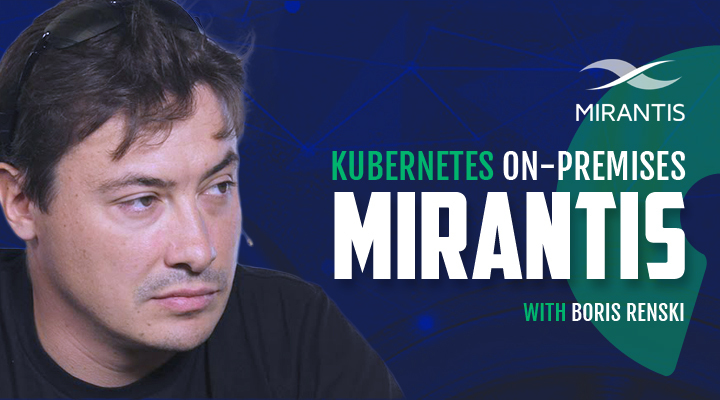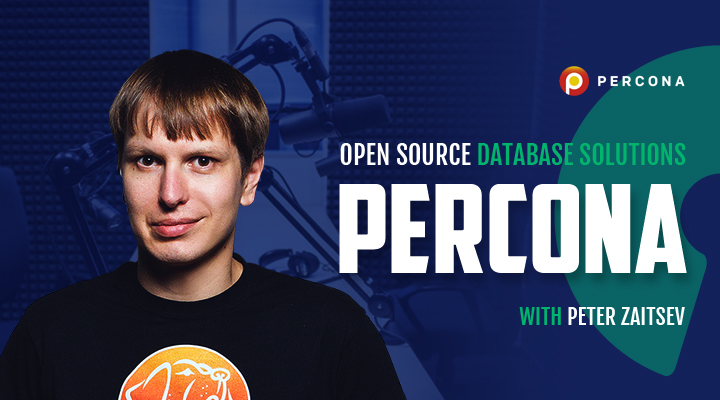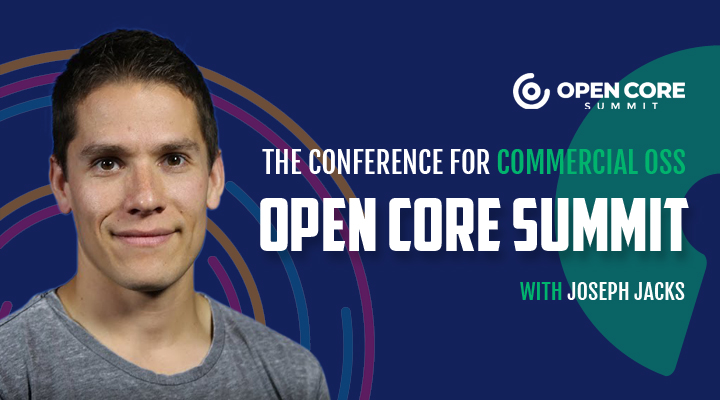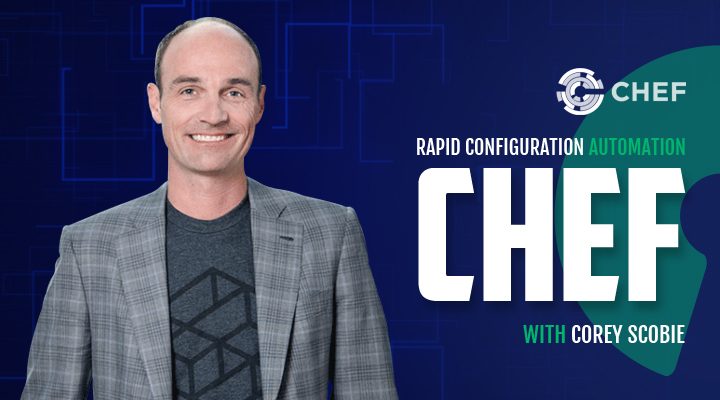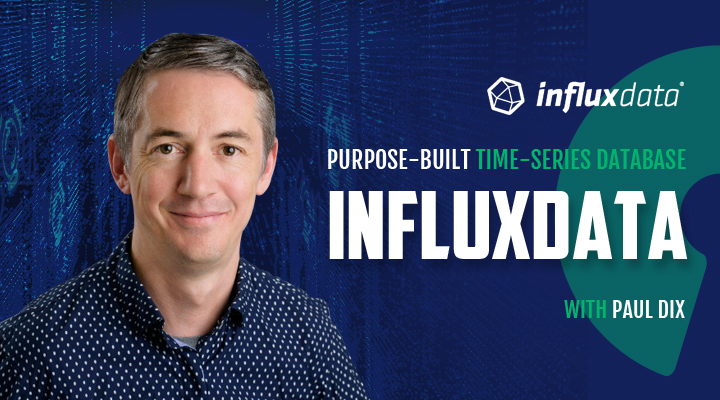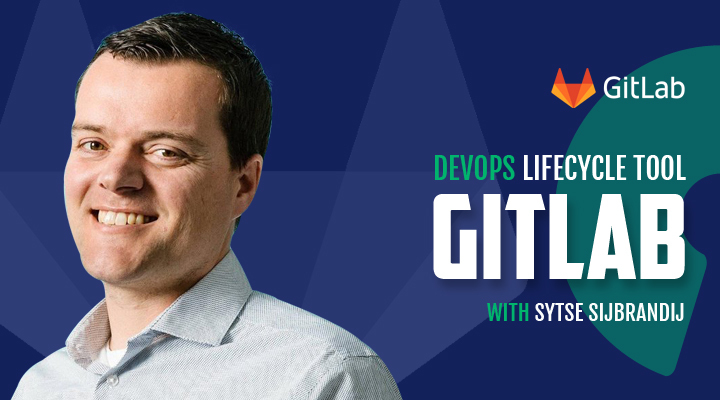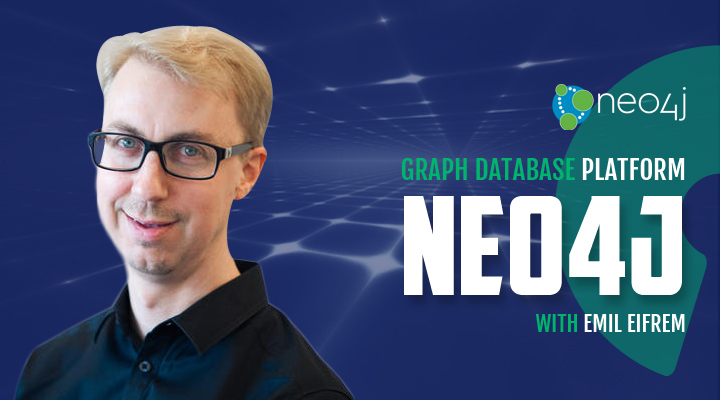Episode 33: Cockroach Labs – Cloud-Native Distributed SQL Database with Peter Mattis
Peter Mattis is the Co-founder and CTO of Cockroach Labs, the company behind the popular cloud-native, distributed SQL database, CockroachDB. In this episode, Peter discusses their experiences transitioning to a new, less permissive open source license, and how open source startups are evolving business models to maintain competitiveness.
Transcript
Intro
Michael Schwartz: Hello, and welcome to Open Source Underdogs. I’m your host, Mike Schwartz, and this is episode 33, with Peter Mattis, Co-Founder and CTO of Cockroach Labs.
Peter has some hilarious insights into the open source startup world. To me, this episode highlights how open source business models have evolved, how companies who witnessed the proverbial carnage of the last five years are adjusting their license and business models accordingly.
I’m about a month behind schedule right now, this podcast was recorded September 11th, 2019. Peter was in New York City, as you can identify by the frequent sirens in the background.
So, without further ado, here we go. Peter, thank you so much for joining the podcast today.
Peter Mattis: Glad to be here.
What Is CockroachDB?
Michael Schwartz: Quick technology question, and then we’ll revert to business. In the database space, companies are moving into adjacent markets. So, Redis starts to add persistence, MongoDB starts to add caching – in this kind of market, what’s the sustainable advantage for CockroachDB?
Peter Mattis: It’s an excellent question. What we see as our advantage right now, is we’re a blend. We didn’t move into adjacent markets, but we saw a gap in the market.
There’s NoSQL databases that have been out for a decade and getting a lot of traction because they provide this ease of use and easy horizontal scalability. But we also saw those databases as failing application developers, because they put a lot of burden on the shoulders of application developers due to their lack of transactions, lack of schemas, lack of indexes.
We saw this place in the middle, where we could have a horizontally scalable, distributed SQL database. A niche we’re occupying is to actually make this a geo-distributed database, so we can scale geographically and support global applications.
This is becoming an increasing need in the market, with regulations such as GDPR, but also with the advance of new technologies, people are just adopting faster speeds from the products they use. A user in Singapore wants to access their bank data, and make it feel instant, not make it feel like they’re jumping halfway across the world to get access to their data.
Cloud Strip-Mining
Michael Schwartz: Your new BSL license, or Business Source License, states that the one and only thing you cannot do is offer a commercial version of CockroachDB, as a service, without buying a license. What I’m wondering is, would this actually be a bad thing? Because Elastic and MongoDB haven’t exactly done badly since Amazon offered their software as a service, so, maybe would it even help you?
Peter Mattis: That’s a fantastic question. The thing is, this is, to some degree, a risk mitigation.
Elastic and MongoDB, I think if they had the choice, they would go back and put a license like this in place. Especially in the case for Elastic, they’re too far upon to go back, and they can’t retroactively apply that license to the source code like that.
That threat from the Amazon’s and Google’s is real. They sure wish they could have taken business maneuvers three years ago. We’re not facing this threat this year, we probably won’t face the threat from the major cloud providers next year. But it’s two years down the line, by the time we get there, the opportunities, the moves we can make are much more limited.
We had significant internal debates about this, and this is a way to just kind of de-risk some of those eventualities. I feel that BSL has come out of this nice balance. Three years down the road, our current release of CockroachDB will be active and fully open source. But then, we’ll have another three years of time to have further improved it.
We actually kind of see that combining our incentives with the incentives that users and open source users, purely closed source software maybe never has a time frame where it’s going to become open, even when it’s reached end-of-life for the company.
Our software will have that time frame. Every three years, on a rolling basis, it will become an open source. And this is our means of protecting against eventualities that could seriously harm or completely destroy companies viability.
BSL License
Michael Schwartz: Was Michael Howard and MariaDB influential in coming to that conclusion?
Peter Mattis: MariaDB certainly was. We were looking out at ways that we could protect against the stripmining that’s taking place of open source, where company like Amazon can come in and take what has been developed by another entity, and just extract all the value from it, by providing it as a service.
Don’t get me wrong, what Amazon is doing, from the amount of work and the services there, can oftentimes not be flowing back to the original developer or developers, or open source companies. This is a huge existential risk, and for open source developers, independent ones, this is just kind of like supreme irritation, “Hey, I developed this work to make this awesome, beautiful bit of open source, and someone else is actually getting all this value from it.” That kind of sucks.
We were looking around for ways to protect against that. We considered a number of alternatives, we considered closed sourcing more of the product, we never wanted to do that. We considered not doing anything, we just continued with business as usual and tried to fend off the Amazon’s or Google’s, and that also felt insufficient.
Like I said earlier, the BSL felt like a nice balance between the two, and gives us a pretty strong measure of protection, but it doesn’t completely close off the source.
Value Of Community
Michael Schwartz: So, it’s pretty hard to write a database?
Peter Mattis: Very hard.
Michael Schwartz: Is the community materially adding value to the product?
Peter Mattis: I would say yes and no. I mean, databases – it’s yes, in a sense we get a lot of feedback from the community about the things they need to the things they want to use.
There’s modest actual code contributions from the community, not huge code contributions. The database is a complex piece of software, and there’s no way around that. You need to have kind of main specific expertise, and even within Cockroach Labs, the company behind CockroachDB, there’s main specific expertise within various teams.
People working on the SQL optimizer have expertise about doing the SQL optimizations; versus people working on a web UI frontend, need specific knowledge about observability patterns; versus people working on a transactional layer that need to know about distributed transactions and protocols like Raft.
What we see is, it’s not a very approachable product for a random person to come online and make contributions. That said, we have had contributions, people who have been able to do stuff, both at the edges and kind of deep within the product. Over time, I expect to see that increase. Especially, as the company grows, we have more energies to support those efforts.
Remote Workforce?
Michael Schwartz: Is the business team and the developers of CockroachDB – is everyone centralized, or is it remote?
Peter Mattis: It’s not all remote, it’s not all centralized. We are primarily based in New York City – that’s the headquarters, that’s the executive team is primarily based. We do have a remote office in San Francisco, one in Toronto, we have developers in Seattle, and then, a couple more scattered in other places.
This hasn’t been purely intentional. It’s been opportunistic, as we got these people, as we found people who had expertise in various areas. And of course we have the sales people distributed to their various regions.
Pricing
Michael Schwartz: So, with containers and auto-scaling, the old way of pricing database seems to be totally broken – did you find that you needed to reinvent a pricing model for your product?
Peter Mattis: We were actively undergoing discussions about the way people want to consume and pay for databases and services internally right now.
We have a pricing model for, if you get an enterprise license and you want to deploy CockroachDB on premise. And that’s kind of the more the standard, you pay for a number of cores, paying is based on what kind of CP you’re using.
This is kind of translated over into our Cockroach cloud offering, which is still currently in private beta. But we’re very much looking towards a day in the future, where there’s more of a pay-as-you-go, usage-based pricing.
That seems to be the easiest thing for consumers and application developers to use. It eliminates a lot of the headaches of capacity planning, but in order to go along with that kind of model “pay-as-you-go,” you need to have a database that scales elastically. And that’s what we’ve also been developing and putting a huge amount of energy into.
Comments Of RedHat Acquisition By IBM
Michael Schwartz: I think the industry is reeling a little bit after the acquisition of Red Hat by IBM. Do you have any thoughts on what that means for the commercial open source market?
Peter Mattis: Red Hat was the original open source software company. They have a unique success in their model. And their model embraced open source tightly, and provided services and support for open source.
And the common wisdom is that other companies trying to follow those footsteps have run into difficulties of having just a pure support in services model.
So what does the acquisition of Red Hat mean?
One, it’s kind of a sign of like, “Hey, this company existed and grew to a massive scale.” And it was seen as a very strategic move by IBM to buy them. They worry a little bit about what’s it’s going to mean for all the open source goodness that Red Hat was doing, but I think also open source has evolved past with Red Hat.
We see the big companies, the Facebook’s, and Google’s, and Amazon’s, also embracing open source, but also an ecosystem of startups were embracing it from the early days.
So, coming to my overall conclusion, I think the industry had already moved past Red Hat by the time that acquisition had happened.
Is Open Source A Bait And Switch?
Michael Schwartz: MongoDB recently commented that their open source strategy was primarily related to marketing. Is commercial open source just sort of bait and switch?
Peter Mattis: What do you mean by bait and switch?
Michael Schwartz: The benefit of the open source, they’re saying really was to get you to use the product so that you would buy something, so it’s really just a marketing channel?
Peter Mattis: I mean, if something is viewed as a go-to-market strategy, then what I think about open source is, people can just download and start using your product without going through some heavyweight handholding from a sales rep – I think there’s a huge liberty in that.
I very much prefer to use products, so I can just download and start kicking the tires rather than going through whatever that is – giving someone my email address, or getting on a phone call. I see that as kind of a marketing strategy.
There’s also a strategy, especially with something like a database, that there’s concerns. A database is a very score of what businesses do. They’re storing data in this thing, it is holding the crown jewels for companies.
For us, there is a bit of a concern of, like, how do you get a closed source database going again in this day and age, when as a startup people are wondering like, “Oh, will you be there in two years?”
With open source, at least, it is a reassurance that no matter what happens with Cockroach Labs, CockroachDB the database will still be there.
I don’t think it’s a complete bait and switch. I think there’s aspects of it that are self-serving, there’s aspects that are altruistic as well. I very much know that I originally got into open source due to those altruistic aspects, seeing all that open source code out there, being able to get inside, tinker, learn from it.
I thought that was great. I wanted to get back to it, and I still have those feelings. I also have to balance that out if you want to have a company that’s successful and looking at how open source can be part of that.
Move By Chef And Cloudera To 100% Open Source
Michael Schwartz: Recently Cloudera and Chef have moved to an all open source strategy. Do you think we’re going to see more of that trend?
Peter Mattis: I think we’re going to see a period of time of experimentation in different models.
There was kind of this feeling that there’s wisdom about, here’s how you build a product that’s open source, you have open core, we saw Enterprise licenses. Then all this moved to Cloud. And being able to monetize your open source as-a-service has kind of flipped things up in the air and started creating a period of time of innovation.
So I’m excited to see this innovation happening because we’ll see what shakes loose out of it. We’re not taking that path and making everything open source, other companies are. Some of them are going to be successful, maybe we’re successful, and history will be the judge of that.
Market Segmentation
Michael Schwartz: Let’s talk a little bit about Cockroach. How do you segment the market?
If you have a database, you can sell literally to anybody. Do you just wait for customers to try it and call you? Or, is there any way like, you’re looking at the market to break it down and sort of attack the market?
Peter Mattis: We don’t necessarily do the segmentation in the same way you might see at other companies, where they might just segment it purely on, like, “Oh, this is banking, this is healthcare.” We do have those segments, but we’re also looking at use cases, and we kind of segment on use cases.
Broadly speaking, in the database market, there’s two huge segments – if you’re looking at the first level of division – and that’s between the analytics databases and transactional databases.
We very much have placed ourselves in the transactional database market. That’s like the kind of the first level of segmentation. It’s part of our marketing message, we want to be the system of record for various workloads.
And storing, knocking the analytics workload, but actually storing the transactional process, and storing the user records, ledgers, the healthcare records.
The further segmentation that takes place is, where we are getting traction with regard to these use cases that people are comfortable moving on to CockroachDB now, versus the ones that they will be uncomfortable moving in the future.
Part of this is like, we break down the Fortune 2000 we look at, we break down those big enterprises, all of them have heavy database usage. But also be looking at the startups that are coming new into the space. And for startups, there is doing our marketing message and then training our sales engineers or account executives to identify the use cases that fit nicely with the current CockroachDB capabilities.
License Enforcement
Michael Schwartz: Of course, there’s no license enforcement in your product, so you can’t force companies to get to call you and get a license. Is the business really on the honor system? How do you get customers to actually get a subscription?
Peter Mattis: We do have Enterprise functionality in the product. And you have to have Enterprise license to do that. In order to get an Enterprise license, this is where you need to get the subscription, you have to talk to our sales people in order to do that. But because it’s open source, there’s no strong cryptography around this. There is a little bit of cryptography but it’s nothing strong, it’s nothing unbreakable, because it’s open source; people could violate that.
That way, it’s on the honor system. Is that viable? I think in the U.S. it is viable, and in most of the world, it is viable.
In China, it’s kind of a notable exception, where they’re very willing to not play to that spirit and just take this stuff for free. But even there, we have a little modest bit of traction with Baidu, out in China.
I think the interesting thing and the interesting advantage that CockroachDB and Cockroach Labs has, is that it’s running a database without actually having a support contract; it’s a very foolish maneuver for any company to make.
It’s almost like another fiduciary duty to have such contracts in place because, if any, like risk offers, those company was to look and say, “Oh, hey, what are the risks to this business?” “Oh, I’m running on this open source database, we actually have no relationship, no support contract with the company behind that database.” They would be raising their eyebrows until they jumped off the top of their head.
I think that way, we’re in kind of a very nice position where people who come in, they use this as open source, with testing and development, they kick the tires of the product. And when they actually start getting production, they’re like, “Whoa, wait. We definitely need to come talk to them,” and that’s when they engage with our salespeople.
Products
Michael Schwartz: Of the products and services you offer, which is the most important from a revenue perspective today? And which product or service offering do you think has the most promise for the future?
Peter Mattis: Today, it is kind of on-prem Enterprise licensing, where we deliver CockroachDB as “shrink-wrapped software.” We don’t actually deliver shrink-wrapped per se, we give people binaries. This is essentially binary software that they run in their data centers. Sometimes, they run it on the public cloud. Right now, that is by far the majority of our revenue.
We saw the writing on the wall way back, a couple years ago that providing CockroachDB as a service was going to be our future. And we’ve been working towards that future. We’re starting to have revenue come in on that. And I very much expect that to be increasing.
It’s hard to predict a time when those revenue streams cross, but I see that the revenue from the cloud over the next year will be increasing dramatically.
Frankly, the revenue from our on-premise deployments is going to be increasing too. It’s hard to say which is going to have the steeper inflection curve yet.
Kubernetes?
Michael Schwartz: Has Kubernetes and containers threw a wrench in your world at all?
Peter Mattis: No, Kubernetes has actually been great for us.
Kubernetes provides easy running administration of stateless services, stateless applications, but most databases don’t fit into that role very nicely. CockroachDB fits in there very smoothly. CockroachDB runs on Kubernetes nicely.
We have a ton of our customers. It’s the single most popular way to deploy CockroachDB is on top of Kubernetes. Additionally, we’re using it as Kubernetes is the backbone for a Cockroach cloud service. And that’s how we run CockroachDB. So, not only throwing a wrench, Kubernetes is a bit of a wave we’re riding like right now.
Funding
Michael Schwartz: Cockroach Labs has had some pretty epic funding rounds. I’m wondering if you have any advice for entrepreneurs on how to survive this process?
Peter Mattis: My co-founder Spencer, he is fantastic, he has a kind of a superpower at talking to the VCs. And I think you need to have one of the founders of the company be in that role, where he’s interacting with our VCs, our current ones, as well as potential future ones frequently. It is a little bit like a never-ending process.
You finish one round, and other people are candidates for the next follow up round. And you’re always kind of thinking out to that future.
Cockroach Labs is in a fairly nice position, where the database market is huge and well understood. And it’s well understood that it’s not going to disappear. It might get disrupted in various ways, and we see some of those disruptions happening. Oracle is the elephant in the database market, and yet, to some degree, a lot of people can say of them it’s yesterday’s news.
AWS is kind of the growing elephant, and maybe it’s the gorilla in the room to work with elephant, it’s the thing that everybody’s paying attention to. They’re kind of changing the revenue breakdown in that space, but there’s just such a wide market area. There’s plenty of room for new entrants, and that’s one of the things that our investors saw, and they’re excited to buy.
They know there’s money, it’s not like we’re out there developing a new market from scratch. We’re breaking into an existing market with entrants, who are both very aggressive as well as entrants, which seem to have befallen by the wayside.
Partnerships
Michael Schwartz: The business is not super old. I’m wondering if you have started to work on developing partnerships, or collaborations, or maybe what companies have really helped you so far in the market?
Peter Mattis: We do direct sales to companies, we also have partnerships with various companies, with ObjectRocket, it’s a Rackspace company, partnership with IBM, and a number of others – I don’t have a list in front of me. But a handful of partners we are starting to work with, integrators as well, and those are certainly important ways for databases to get used and integrated into the system.
We’re also trying to work with companies that aren’t buying us directly but are building their own products, top of databases, and want to work with CockroachDB. We’ve seen this in the banking sector for instance, where there’s companies that are running new infrastructure for core banking services to the major players. They’re looking at CockroachDB is enabling them to provide additional functionality.
Meeting Sales Goals
Michael Schwartz: When you raise VC money, there must have been a renewed effort to sort of shore up the sales and marketing – has it been working?
Peter Mattis: The history of Cockroach Labs is, we spent kind of two years getting to our first 1.0 release of the product. We built something, we’re always painting a vision of, “Hey, this is what we’re going to build.” And people are like, “Oh, no, it’s going to be too hard to build.” You get that first proof point you built, you get the 1.0 version out there, and they are like, “Ah, okay.”
People are saying they’re going to use it, but are they actually going to use it? So, that third year was about, “Okay… yeah.” We had users who started kicking the tires and a few risk tolerant users getting it into production.
It’s at the end of the third year, when we actually started convincing people to give us money for it. Those were very early efforts at the sales side.
Then, of course, as of 2018, last year, we really started seeing an increase or ramp up in the revenue to the point where we’re like. “Okay, it’s time to actually put more fuel onto that fire.” And that’s where the next round came in. This was just recently, but we saw that it’s time to start putting more sales teams together.
So, in 2018, it was primarily one sales team. Actually, I don’t even know the number of sales teams right now, it actually might be up to seven or eight sales teams. And that’s usually an account executive, plus a sales engineer, who are starting to flesh out professional services offering as well. But you do this all with the signals that these things are needed.
Buying our professional services, because we just had sales engineers acting that rule, now it’s gotten to the point where it’s a full time role, and we were actually looking to increase headcount there. We want to add account executives, which are just kind of pure overhead, until you actually can see that, “Oh, yeah, we have a product that you built that people are willing to give you money for.” And it’ll actually work for the customers and production.
That’s where we were getting all that evidence in 2018, whereas the timing of the fundraise is, like, you’re trying to get from milestone to milestone in the lifetime of the company. The first funding was to build the product, the second bit of funding was to get to an initial revenue, and this latest funding is to be growing the revenue to a place where we can really start expanding the sales team aggressively.
I mentioned marketing as well, meaning there’s more effort going on the marketing side as well. When you grow in sales, you often grow in marketing, kind of in tandem. The sales people need food, and the people put the food in front of the salespeople are the marketing team. They’re generally the initial marketing qualified leads, which get handed over the sales, become sales qualified leads, and eventually some of those become customers.
Training
Michael Schwartz: Do you consider the training for it, to be part of the marketing of the product, or just part of the product?
Peter Mattis: Training is an important part of marketing, it’s an important part of delivering like the full product. There’s a basic way in which training is marketing, which is people who get certified or do training on CockroachDB, they’ll tweet about it, they’ll tell their friends, “Hey, I did this thing, this database is really cool.”
In some ways, it’s just kind of purely direct marketing in that sense, but it’s also part of the product. People need to know how to use it. CockroachDB, we put a ton of effort in making it simple, and yet, it’s still a complicated product, and they want to know how to use it.
By giving them that education, they self-service themselves, and we have to put less money into support. We still put a lot of effort in support, just hopefully there’s less of it, because people are trained up on how to use CockroachDB properly.
Open Source Again?
Michael Schwartz: If you were to start another software company tomorrow, would you make it open source?
Peter Mattis: I would love to make it open source. Probably would.
I think if I was to start another one tomorrow, the big difference is, it’ll almost certainly be some kind of SaaS offering. Software-as-a-service from the get-go instead of running it on-prem.
We were coming out with CockroachDB in an inflection point, where, even when we were founded four and a half, five years ago, when we were having these conversations, we knew database-as-a-service was the future. And yet, we’ve also seen it wasn’t quite here yet.
So, we’re trying to bridge this chasm right now between the old way of writing databases and the new way of consuming them to be as-a-service. The market overall, and all the big Fortune 500 companies, they almost all have cloud strategies to get off their private data centers into the public cloud. These things will take a while to unfold, but there’s just this huge, and we have seen only the tip of the iceberg of how that’s going to unfold.
My feeling is now, you can sustain yourself as software-as-a-service now, and it has been true for a while in a number of different markets. But I think you can do it for a database as well. I’d do open source, I’d do it database as a service, or I’d do whatever software-as-a-service, if I was starting up a company tomorrow.
Biggest Challenges
Michael Schwartz: Last question. What do you think are the biggest challenges for new companies trying to use open source as part of their business model?
Peter Mattis: The challenge is, you might be overly optimistic in how much impact open sources has, like the benefit you are getting from the community. And there’s success or disaster that can happen there.
If you develop something open source, and it actually gets incredible community traction, then there’s actually a huge problem that comes with that, which is managing the development at that point.
It’s almost like the open source product can become owned by the community, and they can take it and nudge it in directions that aren’t necessarily in the strategic long-term vision of the company itself. I think kind of struggling that is an enormous challenge.
Any company has this. People come and say, like, “I want X, Y, Z feature.” And you’re like, “But that’s going to conflict with this other feature that has been asked for.” With open source the challenge is, they can just go and do it. They can fork it, they know it’s open source, they can do what they want with it. And trying to manage that can become a huge, huge challenge.
Closing
Michael Schwartz: Okay, Peter, thank you so much for joining us today and sharing all that great advice and insights.
Peter Mattis: My pleasure. It was great chatting with you, Mike.
Michael Schwartz: Thanks to the Cockroach Labs team for helping to organize and promote this podcast.
Transcription and episode audio can be found on opensourceunderdogs.com.
Music from Broke For Free and Chris Zabriskie.
Audio editing by Ines Cetenji. Production assistance and transcription by Natalie Lowe. Operational support from William Lowe.
Have comments? Tweet at us. Our Twitter handle is @fosspodcast.
iTunes listeners, send us your five stars – this can be your open source contribution for the day.
Next week, we have a change of format. If you don’t know The Changelog, it’s an epic open source podcast currently with more than 350 episodes, the hosts are Adam Stacoviak and Jerod Santo.
We’re going to republish an amazing episode of The Changelog, you’ll have to tune in next week to discover which one it will be. A big thanks to Jerod and Adam for sharing this interview ad-free. Don’t miss it next week!
Until then, thanks for listening.


